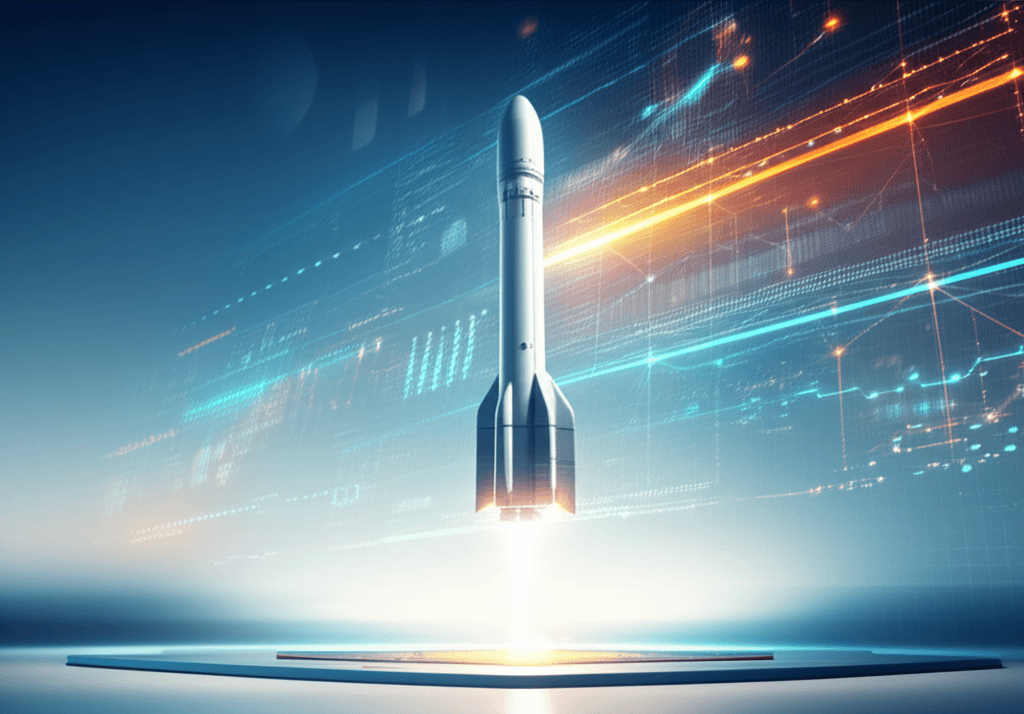Honda propels into space with AI-driven reusable rocket tech.
From cars to cosmos: Honda's AI-powered rocket leapfrogs into space, targeting suborbital launches by 2029.
June 19, 2025

In a significant move that signals its expanding ambitions beyond terrestrial vehicles, Japanese automotive giant Honda has successfully tested a small, reusable rocket. The test, conducted at a facility in Hokkaido, Japan, represents a critical step in the company's long-term vision for space technology and its goal to develop a suborbital launch vehicle by 2029.[1][2] This achievement places Honda among a growing number of private companies worldwide pursuing reusable rocket technology, a field dominated by players like SpaceX.[3] The successful flight, though modest in scale, leverages Honda's extensive expertise in combustion and control technologies, underscoring a strategic pivot towards the burgeoning space economy.[1] The surprise announcement has sent ripples through the aerospace industry, highlighting how technologies developed for the automotive sector can be repurposed for the final frontier.[4]
The experimental rocket, measuring 6.3 meters in length and 85 centimeters in diameter, performed a vertical takeoff and landing test that lasted 56.6 seconds.[5][6] During the flight, it reached a peak altitude of 271.4 meters before making a remarkably precise landing, touching down just 37 centimeters from its target.[7][8] The primary purpose of this test was to demonstrate and validate key technologies essential for reusability, including flight stability during both the ascent and descent phases, as well as the crucial landing capability.[5][9] Data gathered during the brief but pivotal flight will be instrumental for future development.[10] The test was conducted at Honda's facility in Taiki Town, a location that has become a hub for aerospace research in Japan, hosting activities for organizations like the Japan Aerospace Exploration Agency (JAXA).[5][7] Honda has been conducting engine combustion and hovering tests at the site since 2024, emphasizing a commitment to safety through collaboration with local authorities.[11][12]
Honda's foray into space technology is not a sudden whim but part of a broader, long-term strategy announced in 2021.[6][7] The company's vision extends to creating new value and expanding human potential by transcending the constraints of time and place.[5][11] Inspired by the dream of its young engineers, Honda is leveraging its core competencies honed over decades of manufacturing cars and robots.[5][11] The ultimate goal is to launch satellites for various services, potentially creating synergies with its other business ventures, such as connected mobility.[1][10] While the company has stated that its rocket research is still in the fundamental phase and no decisions on commercialization have been made, the target of achieving suborbital launch capability by 2029 sets a clear and ambitious timeline.[6][1][13] This move aligns with a broader Japanese national strategy to bolster its space industry, with the government establishing funds to support private ventures and aiming to double the industry's size by the early 2030s.[2][14]
The successful test carries significant implications, particularly in how it showcases the transferability of advanced automotive technology to aerospace applications. Honda has explicitly stated its intent to utilize technologies amassed from the development of its various products, including automated driving systems.[1][15] This is where the intersection with artificial intelligence becomes critical. The precision guidance, navigation, and control systems required for a rocket to launch, fly a specific trajectory, and then autonomously land on a small target are heavily reliant on sophisticated AI algorithms. These systems must process vast amounts of sensor data in real-time to make instantaneous adjustments to engine thrust and control surfaces. Honda's experience in developing AI for its ASIMO robot and its "Cooperative Intelligence" framework for autonomous vehicles provides a strong foundation.[16][17][18] This AI-driven technology, designed to predict risks and ensure smooth operation in complex environments on the road, is directly applicable to the dynamic challenges of rocket recovery.[19] By leveraging AI to ensure flight stability and precise landings, Honda can significantly enhance the reliability and cost-effectiveness of its reusable rockets. The development of these systems will likely involve a combination of classic control theory and modern machine learning techniques, including reinforcement learning, where an AI agent can learn optimal landing maneuvers through millions of simulated trials. Furthermore, the data collected from each test flight serves as a valuable dataset for refining these AI models, creating a feedback loop of continuous improvement. This synergy between automotive AI and aerospace engineering could provide Honda with a unique competitive edge as it navigates the complexities of the space launch market. The company's work on avatar robots, designed to perform tasks in remote or hazardous environments like space, further illustrates its commitment to integrating robotics and AI into its future-facing initiatives.[20][16]
In conclusion, Honda's successful test of its reusable rocket prototype is a landmark achievement for the company and for Japan's burgeoning private space sector. It demonstrates a serious commitment to becoming a player in the satellite launch market, leveraging decades of engineering prowess from the automotive world. While the rocket is still small and the path to commercial, suborbital flights by 2029 is long, this initial hop is a powerful proof of concept. The true significance of this development may lie in Honda's ability to integrate its advanced AI and autonomous systems expertise, potentially pioneering new levels of precision and reliability in rocket reusability. As the demand for satellite launches continues to grow, Honda's entrance introduces a new and formidable competitor to the field, one that could disrupt the market by applying the principles of mass production and sophisticated AI control learned from the factory floor to the launch pad.[1][4][21]
Sources
[1]
[2]
[5]
[7]
[8]
[11]
[12]
[15]
[16]
[18]
[19]
[20]